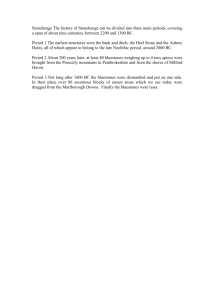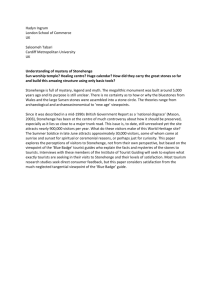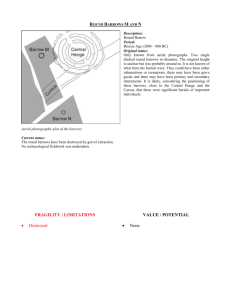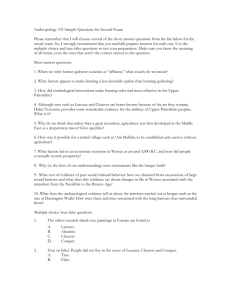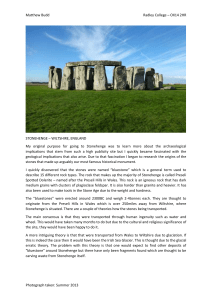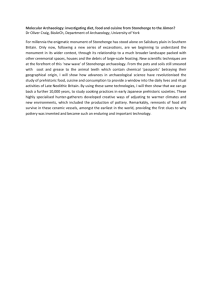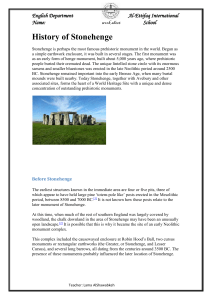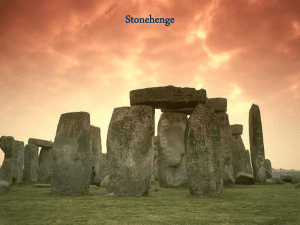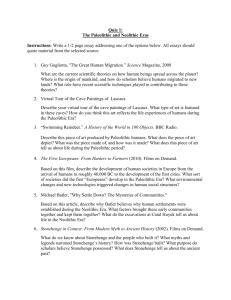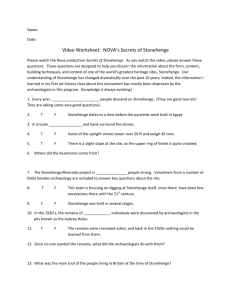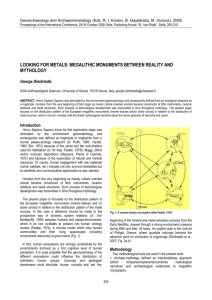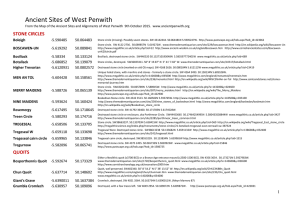Study Questions for February 27 – March 1
advertisement
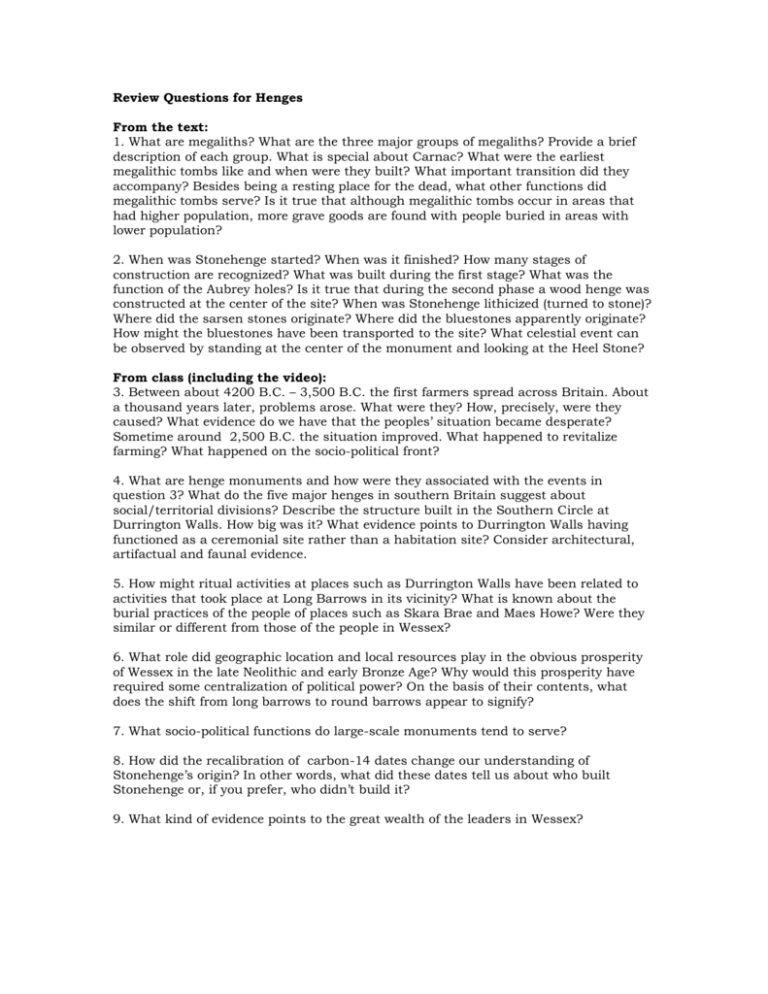
Review Questions for Henges From the text: 1. What are megaliths? What are the three major groups of megaliths? Provide a brief description of each group. What is special about Carnac? What were the earliest megalithic tombs like and when were they built? What important transition did they accompany? Besides being a resting place for the dead, what other functions did megalithic tombs serve? Is it true that although megalithic tombs occur in areas that had higher population, more grave goods are found with people buried in areas with lower population? 2. When was Stonehenge started? When was it finished? How many stages of construction are recognized? What was built during the first stage? What was the function of the Aubrey holes? Is it true that during the second phase a wood henge was constructed at the center of the site? When was Stonehenge lithicized (turned to stone)? Where did the sarsen stones originate? Where did the bluestones apparently originate? How might the bluestones have been transported to the site? What celestial event can be observed by standing at the center of the monument and looking at the Heel Stone? From class (including the video): 3. Between about 4200 B.C. – 3,500 B.C. the first farmers spread across Britain. About a thousand years later, problems arose. What were they? How, precisely, were they caused? What evidence do we have that the peoples’ situation became desperate? Sometime around 2,500 B.C. the situation improved. What happened to revitalize farming? What happened on the socio-political front? 4. What are henge monuments and how were they associated with the events in question 3? What do the five major henges in southern Britain suggest about social/territorial divisions? Describe the structure built in the Southern Circle at Durrington Walls. How big was it? What evidence points to Durrington Walls having functioned as a ceremonial site rather than a habitation site? Consider architectural, artifactual and faunal evidence. 5. How might ritual activities at places such as Durrington Walls have been related to activities that took place at Long Barrows in its vicinity? What is known about the burial practices of the people of places such as Skara Brae and Maes Howe? Were they similar or different from those of the people in Wessex? 6. What role did geographic location and local resources play in the obvious prosperity of Wessex in the late Neolithic and early Bronze Age? Why would this prosperity have required some centralization of political power? On the basis of their contents, what does the shift from long barrows to round barrows appear to signify? 7. What socio-political functions do large-scale monuments tend to serve? 8. How did the recalibration of carbon-14 dates change our understanding of Stonehenge’s origin? In other words, what did these dates tell us about who built Stonehenge or, if you prefer, who didn’t build it? 9. What kind of evidence points to the great wealth of the leaders in Wessex?
